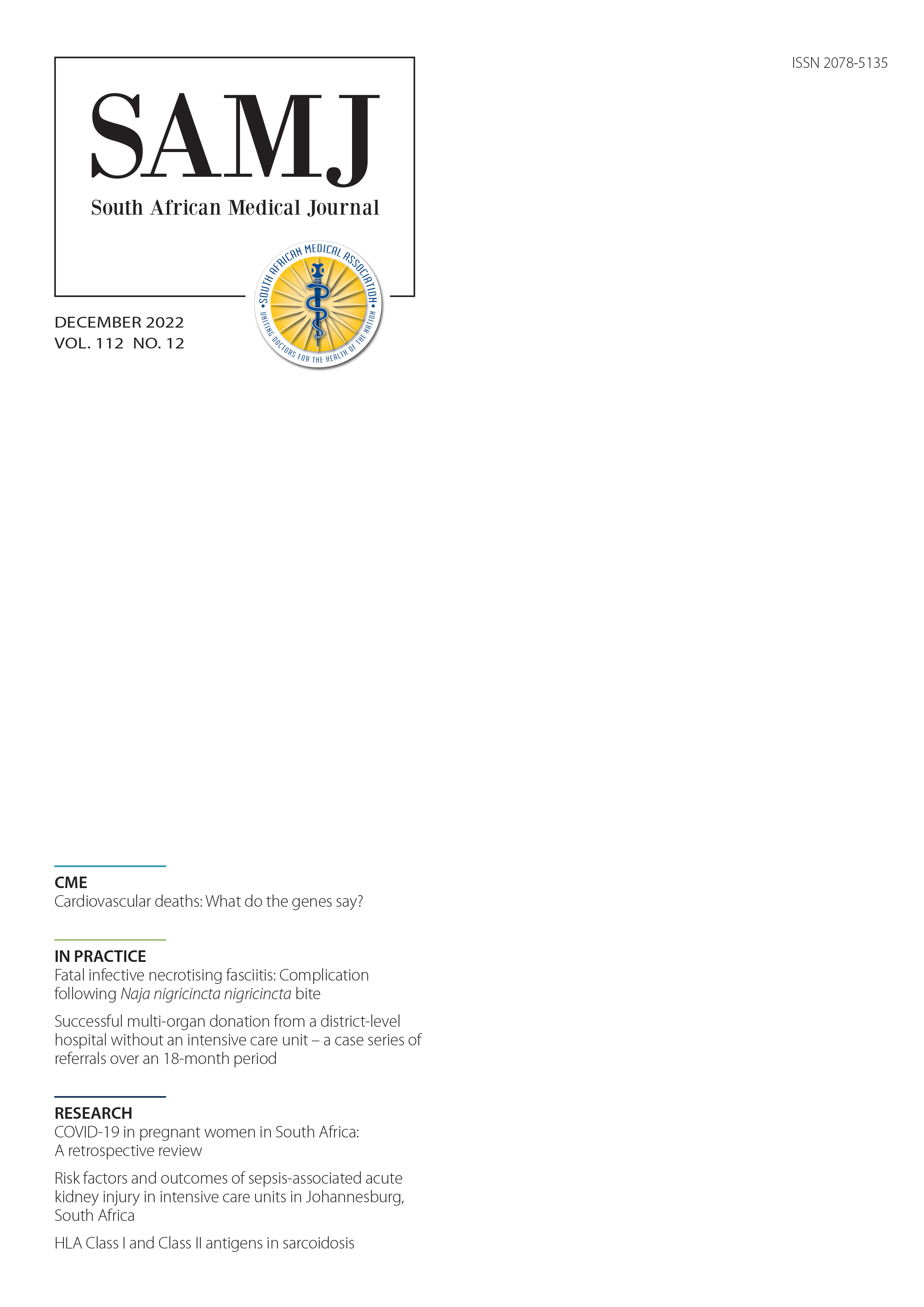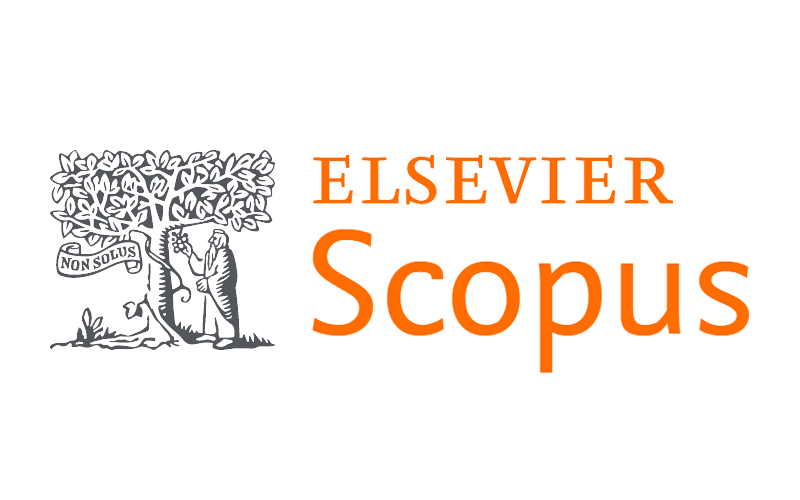Detection of karakin poisoning using a targeted mass spectrometric workflow
DOI:
https://doi.org/10.7196/SAMJ.2022.v112i12.16667Keywords:
Toxicology, berriesAbstract
Treatment and management of plant toxicosis is made more difficult when an alien plant species is ingested, as identification of the toxin may pose a challenge. High-resolution mass spectrometers are required for the toxicological analysis of samples in these cases owing to their ability to scan large mass ranges and accurately identify mass features. We present this case to highlight the value of this technology in clinical toxicology. A middle-aged woman reported visual impairment, dizziness and numbness of her mouth and tongue following the ingestion of a berry. Over time her condition deteriorated, warranting toxicological analysis. The tree the berry came from was identified as Cornynocarpus laevigatus, which is known to produce the karakin neurotoxin. The patient’s samples and the husk and pulp of the berries were analysed using a high-resolution mass spectrometer. This resulted in the identification of the toxin in the berry kernel and husk and patient’s hair, suggesting that karakin could have contributed to the patient’s condition.
References
Marks CJ, van Hoving DJ. A 3-year survey of acute poisoning exposures in infants reported in telephone calls made to the Tygerberg Poison Information Centre, South Africa. S Afr J Child Health 2016;10(1):43. https://doi.org/10.7196/sajch.2016. v10i1.1045
Botha CJ, Penrith M-L. Poisonous plants of veterinary and human importance in southern Africa. J Ethnopharmacol 2008;119(3):549-558. https://doi.org/10.1016/j.jep.2008.07.022
Veale DJH, Wium CA, Müller GJ. Toxicovigilance I: A survey of acute poisoning in South Africa based on Tygerberg Poison Information Centre data. S Afr Med J 2012;103(5):293. https:// doi.org/10.7196/samj.6647
Eddleston M, Persson H. Acute plant poisoning and antitoxin antibodies. J Toxicol Clin Toxicol 2003;41(3):309-315. https:// doi.org/10.1081%2Fclt-120021116
Lazzaro L, Essl F, Lugliè A, Padedda BM, Pyšek P, Brundu G. Invasive Species and Human Health. Chapter 1: Invasive alien plant impacts on human health and well-being. Wallingford: CABI, 2018:16-33. http://www.cabi.org/cabebooks/ ebook/20183199715 (accessed 7 November 2022).
Wu AH, Gerona R, Armenian P, French D, Petrie M, Lynch KL. Role of liquid chromatography-high-resolution mass spectrometry (LC-HR/MS) in clinical toxicology. Clin Toxicol 2012;50(8):733-742. https://doi.org/10.3109/15563650.2012.7 13108
Shaw SD, Billing T. Karaka (Corynocarpus laevigatus) toxicosis in North Island brown kiwi (Apteryx mantelli). Vet Clin North Am Exot Anim Pract 2006;9(3):545-549. https://doi.org/10.1016/j. cvex.2006.05.014
National Center for Biotechnology Information. Karakin. PubChem Compound Summary for CID. PubChem,2022. https://pubchem.ncbi.nlm.nih.gov/compound/Karakin (accessed 25 March 2022).
Hamilton BF, Gould DH, Gustine DL. History of 3-nitropropionic acid. In: Paul R (ed). Mitochondrial
Inhibitors and Neurodegenerative Disorders. Totowa, NJ: Humana Press, 2000:21-33.
Skey W. Preliminary notes on the isolation of the bitter substance of the nut of the karaka tree
(Corynocarpus laevigata). Trans Preceedings New Zeal Inst 1871;4:316-321.
Pluskal T, Castillo S, Villar-Briones A, Orešič M. MZmine 2: Modular framework for processing, visualizing, and analyzing mass spectrometry-based molecular profile data. BMC Bioinformatics
;11(1):395. https://doi.org/10.1186/1471-2105-11-395
Chambers MC, Maclean B, Burke R, et al. A cross-platform toolkit for mass spectrometry and
proteomics. Nat Biotechnol 2012;30(10):918-920. https://doi.org/10.1038/nbt.2377
Kintz P. A new series of hair test results involving anabolic steroids. Toxicol Anal Clin 2017;29(3):320- 324. https://doi.org/10.1016/j.toxac.2017.05.003
Maurer HH. Hyphenated high-resolution mass spectrometry ‒ the ‘all-in-one’ device in analytical toxicology? Anal Bioanal Chem 2021;413(9):2303-2309. https://doi.org/10.1007/s00216-020-03064-y 15. Thoren KL, Colby JM, Shugarts SB, Wu AHB, Lynch KL. Comparison of information-dependent
acquisition on a tandem quadrupole TOF vs a triple quadrupole linear ion trap mass spectrometer for broad-spectrum drug screening. Clin Chem 2016;62(1):170-178. https://doi.org/10.1373/ clinchem.2015.241315
Downloads
Published
Issue
Section
License
Copyright (c) 2022 D J Watson, A Evans, M Blockman, L Wiesner

This work is licensed under a Creative Commons Attribution-NonCommercial 4.0 International License.
Licensing Information
The SAMJ is published under an Attribution-Non Commercial International Creative Commons Attribution (CC-BY-NC 4.0) License. Under this license, authors agree to make articles available to users, without permission or fees, for any lawful, non-commercial purpose. Users may read, copy, or re-use published content as long as the author and original place of publication are properly cited.
Exceptions to this license model is allowed for UKRI and research funded by organisations requiring that research be published open-access without embargo, under a CC-BY licence. As per the journals archiving policy, authors are permitted to self-archive the author-accepted manuscript (AAM) in a repository.
Publishing Rights
Authors grant the Publisher the exclusive right to publish, display, reproduce and/or distribute the Work in print and electronic format and in any medium known or hereafter developed, including for commercial use. The Author also agrees that the Publisher may retain in print or electronic format more than one copy of the Work for the purpose of preservation, security and back-up.





